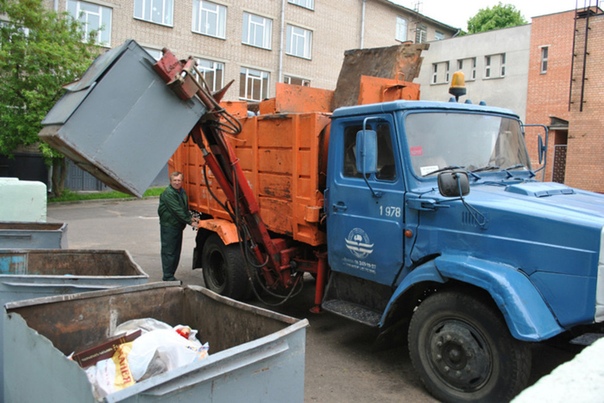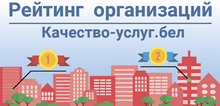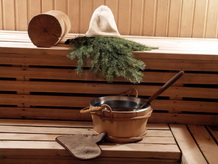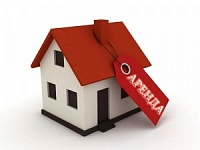Environmentally safe handling of solid municipal waste. Separate collection of secondary material resources. Monday, 19 September 2022 15:04
Environmentally safe handling of solid municipal waste.
Separate collection of secondary material resources.
The world's population consumes more and more every year, which means that more and more waste is generated. The growth rate of household garbage is alarming. Today, every Belarusian throws out about 350 kg of household waste per year. This is twice as much as 15 years ago. In addition, the composition of garbage has changed dramatically. Modern household garbage is a variety of plastic, artificial materials from which packaging, clothing, household items, batteries, electronics are made. When buried, these things decompose for hundreds of years, and maybe more, releasing toxic substances into the soil, water and air. A plastic bag that served for 20 minutes will remain at the landfill in 100 years. At the same time, many household waste can be recycled, put into operation and, thanks to this, reduce the volume of garbage disposal. And also to save natural resources. Recycling is a necessity today. Taking care of the environment worries many of us, and proper waste disposal could solve a lot of important issues and improve not only the environmental, but also the financial situation in the country.
The first–ever example of the beginning of garbage recycling dates back to 1037 - in Japan, they began to collect and recycle old paper. In the West, this idea was first used only in 1690. Industrial recycling of plastic waste began in the 1930s. Unified bottles for milk and soft drinks were developed in the USSR, glass collection points existed throughout the country.
Today, sanitary cleaning of settlements is carried out according to waste management schemes approved by decisions of local executive bodies. These schemes are coordinated in accordance with the procedure established by law with the territorial bodies of the Ministry of Natural Resources and Environmental Protection of the Republic of Belarus, authorized state bodies
and institutions carrying out state sanitary supervision.
The procedure for waste management is regulated by the Technical Code "Environmental Protection and Nature Management. Wastes. Rules for the treatment of municipal waste" (hereinafter referred to as TCH). It acts not only on residents of high-rise buildings and private houses, but also on service companies that take out garbage.
According to the municipal housing and Communal Services, 3.9 million tons of solid municipal waste (hereinafter referred to as MSW) were generated in 2021, of which 73% were household waste and 27% were production waste according to the list of municipal housing and communal services. According to the results of last year, more than 180 burial sites were functioning in the republic, sorting was carried out at 90 sorting facilities, including 7 waste processing plants, the percentage of use of secondary raw materials in the republic was 29%.
In the Minsk region, 664.4 thousand tons of waste were generated last year, waste disposal was carried out at 35 landfills for the disposal of MSW and 12 mini-landfills (as of 01.01.2022 all mini-landfills were decommissioned), waste sorting was carried
out and is being carried out on 18 sorting lines (2 are being commissioned), the percentage of use of secondary raw materials by the end of the year it amounted to 25.3%,
according to the results of the first half of this year – 26.8%.
Waste separation is the practice of collecting and sorting, taking into account its origin and suitability for recycling or reuse. Separate garbage collection allows you to separate recyclable waste from non-recyclable waste, as well as to identify separate types of waste suitable for secondary use. These actions make it possible not only to return maximum materials to industrial circulation, but also to reduce the costs of garbage removal, its industrial separation, as well as to reduce overall environmental pollution, including reducing the area of disposal facilities.
Secondary material resources (hereinafter referred to as WMR) are waste that, after their collection, can be involved in civil circulation as secondary raw materials and for the use of which there are facilities for the use of waste.
Resolution of the Council of Ministers of the Republic of Belarus
On January 28, 2021, No. 50 approved the State program "Comfortable housing and a favorable environment" for 2021-2025, one of the targets of which is the indicator "Use of MSW" and the indicator "Collection (procurement) of WMR".
The indicator "Collection (procurement) of VMR" includes the collection and procurement of the following types of secondary resources:
waste paper and cardboard (documents, envelopes, postcards, calendars, newspapers, magazines, packaging cardboard, boxes of cosmetics). It is forbidden to throw into paper waste: dirty pizza boxes, disposable paper dishes, faxes, receipts, paper covered with a film, a metal layer, juice and milk packaging, parchment
and parchment paper, photos on photo paper;
glass waste (almost any glass container is subject to disposal: cans of food and medicines. Some types of glass are processed or combined, these include: car windows, mirrors, light bulbs);
polymer waste. The main danger of plastic is its cheapness. Retail chains flaunt each other with the number and variety of free packaging packages. Manufacturers pack even the simplest goods in a rainbow layer of bright packaging to attract a buyer. The main source of plastic packaging waste is packaging bags, of which about 60 million pieces are purchased by retail facilities. Rolls of free packaging are ruthlessly unwound by store visitors into kilometers of plastic. When sorted by category, milk bags, bottles of butter, beverages, milk, packing bags, plastic caps, bottles are thrown into a container with plastic
from shampoos, liquid soap, shower gels, household chemicals, detergents, bags with handles, T-shirt bags, plastic buckets, cans, basins, tetra-packs, packaging from canned products. The following types of waste are not thrown into plastic: disposable tableware (all markings), white jars of sour cream and yogurt, egg trays, toothbrushes, diapers, tubes of toothpaste, creams, foil, CD discs, tape cassettes, decorative cosmetics;
waste of household appliances. Discarded household appliances, getting into the environment, causes significant damage to nature. After all, it consists of plastic and metals. Once in the soil, these materials cannot decompose for decades. It is even more dangerous when dangerous elements that are contained in the equipment — batteries, accumulators, cooling systems, etc. - fall into landfills. The issue of proper disposal of household appliances is acute today and if individual people should think about separate waste collection, then companies have to build complex waste management processes Companies, for example BelVTI, which provide services for the disposal of household appliances, accept a variety of devices in any quantities. Of the large equipment, the bulk of the mechanisms to be disposed of consists of washing machines, refrigerators, televisions, electric stoves, microwave ovens, dryers, coolers, electric kettles, dishwashers, office equipment;
worn tires. For more than a hundred years, not recycled and not recycled tires continue to decompose in the ground. At the same time, they release dangerous and toxic compounds into the soil, and then into the groundwater, such as diphenylamine, phenanthrene, etc. Getting into the ground soils, these elements get into drinking water. For example, diphenylamine causes damage to the internal organs of a person with constant inhalation or ingestion. Therefore, tires must be delivered to specialized enterprises for their further processing. Tires from the population are accepted through reception and procurement points free of charge in unlimited quantities. Tires must be clean, free of foreign impurities and metal discs (including water, lubricants).
used oils. Waste oil should be called any of the types of oils that were obtained from untreated oil or synthetic substances. As a result of industrial use, it is contaminated with impurities of chemical or physical content. In simple words, waste oil is a previously used product with a synthetic or petroleum base in the composition.
Such dangerous things as lamps and batteries that have fallen into disrepair should never be thrown into the general garbage. Used batteries and accumulators contain toxic heavy metals: cadmium, lead, mercury, zinc. And fluorescent lamps contain poisonous mercury vapor. Batteries and fluorescent lamps must be disposed of in special containers in stores – places of sale. They will be sent for processing and safe neutralization to factories.
The most important stage in the separation of garbage is the separation of food waste, because according to the morphological composition, up to 40% of organic waste (food waste, grass, foliage, tree branches) is contained in the total volume of municipal waste. This avoids contamination of processed secondary raw materials with products and reduces the volume of landfill gas at landfills.
The waste separation system is based on the idea of supporting sustainable environmental management and minimizing the loss of valuable materials. Separate garbage collection presupposes its independent separation by each person, and the effectiveness of separation requires awareness and understanding of the process by all its participants. Thus, the household waste separation carried out according to the rules avoids the costs of its industrial separation at sorting complexes, and the population becomes a full-fledged participant in the waste processing process. The main principle of sorting is the cleanliness of the container: before sending any container (bags, packages, bottles) to the container, it must be washed and cleaned of food residues.
Useful information! Wednesday, 28 April 2021 21:30
Dear owners and employers of individual households!
The NGO "Housing and Communal Services of the Minsk region " informs about the possibility of obtaining containers for the collection of solid municipal waste with a volume of 120 liters free of charge.
For more information about receiving containers, please contact the district housing and communal services.
Handling of TKA Tuesday, 25 August 2020 14:07

It is no secret that the current problem today is the congestion of yard territories by motor transport. Many drivers even manage to park, including on green lawns, children's playgrounds, even right next to dumpsters. As a result, a large number of garbage trucks do not have free access to containers for the removal of solid municipal waste, and this often leads to disruption of schedules of special transport, and sometimes delays the removal of the container for several days. But this is of least concern to those drivers who leave their cars right next to the containers, although according to the rules there should be at least 15 meters between the garbage area and the parking lot of the car.
"Don't leave me!" - old household appliances asking for help Saturday, 06 June 2020 20:01
Household appliances faithfully serve the family for many years. And when the time comes to part with her-do it beautifully and correctly, with due respect for her. She deserved it!

Read more: "Don't leave me!" - old household appliances asking for help
























